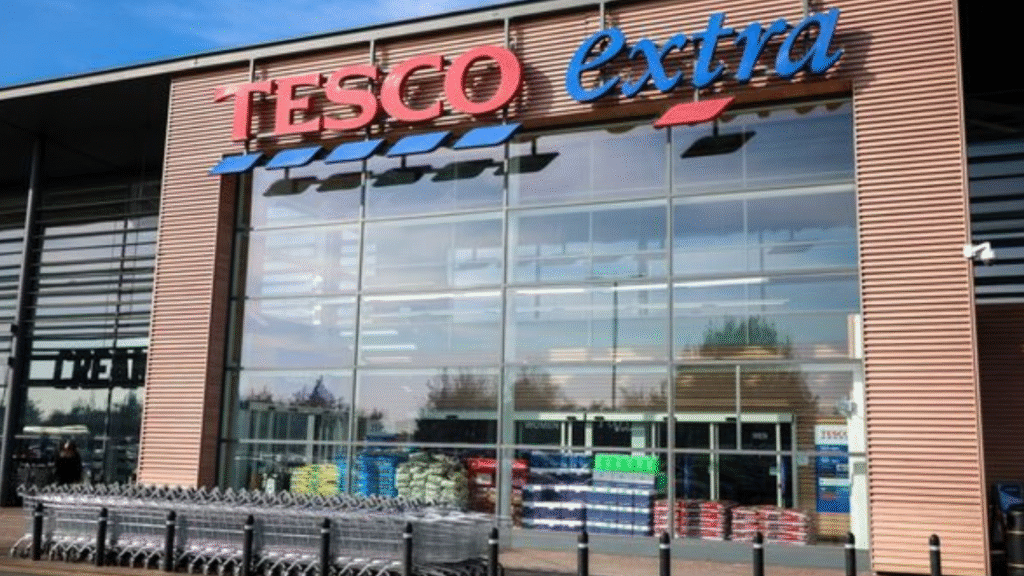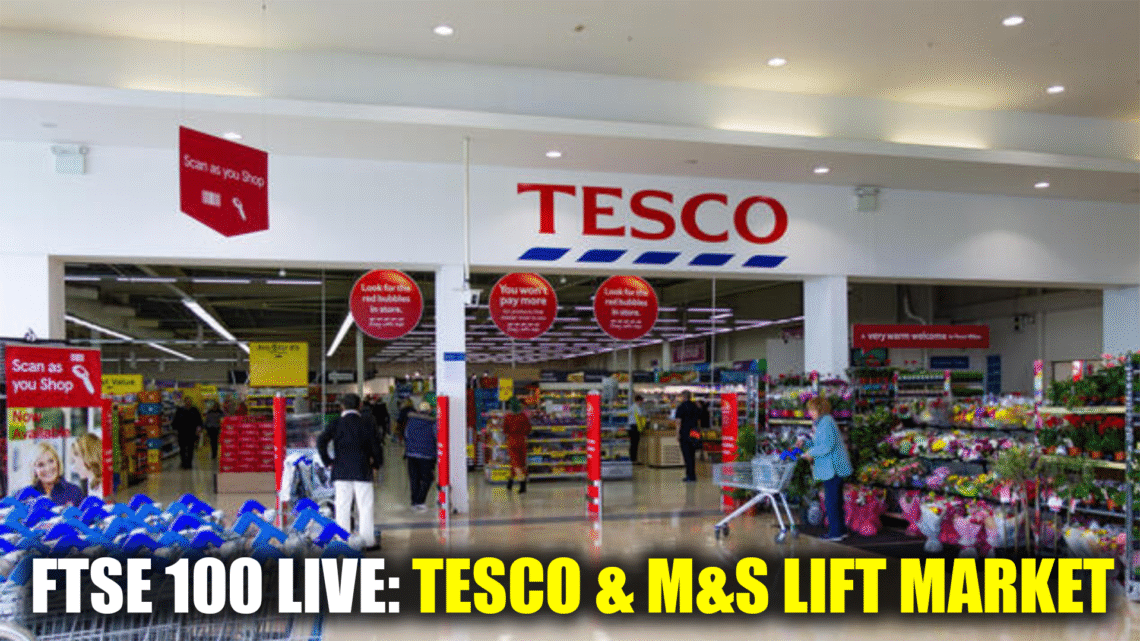The FTSE 100 live update: Tesco share price rises as M&S gains despite market volatility reflects the ongoing resilience of UK retail giants amid economic uncertainty. While broader markets continue to wobble, companies like Tesco and Marks & Spencer (M&S) are delivering encouraging signs for investors. The FTSE 100, often seen as a barometer of UK corporate health, has shown mixed results in recent trading sessions. However, the rise in Tesco’s share price, alongside gains for M&S, provides a welcome boost for both shareholders and retail analysts.
In this article, we break down the latest FTSE 100 movements, analyze Tesco’s performance, explore M&S’s ongoing revival, and discuss what this means for investors in the months ahead.

Understanding the FTSE 100’s Current Position
The FTSE 100 is heavily influenced by global events such as inflation, interest rates, and energy prices. In recent weeks, volatility has dominated trading floors as investors weigh mixed signals from central banks and concerns over global growth.
Despite these challenges, the UK retail sector has provided some bright spots. Tesco’s share price has climbed thanks to solid earnings and strong consumer demand, while M&S continues its turnaround story after years of strategic restructuring.
Tesco Share Price: Why It Is Rising
Tesco, the UK’s largest supermarket chain, has long been a cornerstone of the FTSE 100. Its share price increase comes amid several key factors:
H3: Strong Quarterly Results
Tesco recently reported better-than-expected sales growth, particularly in its grocery division. Rising food prices have boosted revenue, and Tesco has managed to keep customers loyal through competitive pricing.
H3: Market Share Gains
Industry data suggests Tesco has expanded its share of the UK grocery market, outperforming competitors like Sainsbury’s and Morrisons. This reflects Tesco’s ability to balance affordability with quality.
H3: Focus on Cost Efficiency
Tesco’s management has also tightened operational efficiency, cutting unnecessary costs while reinvesting in supply chain improvements. This has reassured investors concerned about profit margins.
Real-Life Case Study:
In the past quarter, Tesco introduced a “price match” campaign against discount rivals Aldi and Lidl. This strategy reduced the risk of customer loss to budget retailers, while boosting overall sales volume.
M&S Gains: A Retail Revival Story
Marks & Spencer, once seen as a struggling brand, has surprised markets with a steady climb in its share value. The M&S recovery story has been years in the making, and recent performance highlights its renewed strength.
H3: Food Business Success
M&S’s food division has become its strongest asset, driving significant revenue growth. Its premium food offerings continue to attract middle-class consumers, especially in urban areas.
H3: Clothing and Online Transformation
After years of criticism for falling behind in fashion, M&S has revamped its clothing lines and invested heavily in online sales. Partnerships with online platforms and improved supply chain systems have boosted digital performance.
H3: Investor Confidence
With multiple quarters of improved performance, M&S is regaining investor confidence. Its shares gaining alongside Tesco’s reflects the renewed appetite for UK retail stocks.
Market Volatility and Investor Caution
Despite positive news from Tesco and M&S, investors remain cautious. The FTSE 100 is still vulnerable to broader economic pressures:
- Interest Rates: Rising borrowing costs affect both corporate investment and consumer spending.
- Energy Prices: Volatile energy markets impact costs for retailers with large logistics networks.
- Global Trade: Uncertainty in global supply chains continues to put pressure on margins.
H4: Strategy Tip for Investors
For investors, the key is to diversify portfolios. While Tesco and M&S offer strong prospects, exposure to multiple sectors helps reduce risk from external shocks.
Tips and Strategies for Investors Watching the FTSE 100
- Monitor Quarterly Updates: Tesco and M&S release trading updates that reveal short-term performance. These are critical for anticipating share price movements.
- Compare Retail Rivals: Keep an eye on Sainsbury’s, Morrisons, and online grocers for competitive shifts.
- Look for Dividend Stability: Tesco’s strong dividend record makes it attractive to income investors.
- Balance Growth and Stability: M&S is more growth-focused, while Tesco offers stability. Combining both in a portfolio may provide balance.
Investor Example: Balanced Retail Portfolio
Consider an investor who purchased Tesco shares five years ago and added M&S stocks during the 2022–2023 recovery period. This portfolio strategy has outperformed other retail-only holdings due to Tesco’s steady dividends and M&S’s capital appreciation.
By combining stability (Tesco) with growth (M&S), the investor minimized downside risks while benefiting from upside opportunities.
Conclusion
The FTSE 100 live update: Tesco share price rises as M&S gains despite market volatility highlights the resilience of UK retail leaders in uncertain times. Tesco’s efficiency and market dominance provide stability, while M&S’s revival story offers growth potential.
For investors, the lesson is clear: retail giants can shine even in turbulent markets. By following earnings reports, monitoring sector competition, and balancing growth with income, investors can position themselves to weather volatility while benefiting from long-term opportunities.
The FTSE 100 may remain volatile, but Tesco and M&S are proving that resilience and innovation can drive success in the toughest conditions.
FAQs
Q1: Why is Tesco’s share price rising in the FTSE 100 live update?
Tesco’s share price is rising due to strong sales growth, efficient cost management, and increased market share.
Q2: How is M&S gaining despite market volatility?
M&S is benefiting from its strong food division, improved clothing ranges, and a successful digital transformation strategy.
Q3: Is it safe to invest in retail stocks during volatile markets?
Retail stocks like Tesco and M&S can be safer than others, but investors should still diversify portfolios to reduce risk.
Q4: Which is a better investment right now: Tesco or M&S?
Tesco offers more stability and dividends, while M&S provides stronger growth potential. The choice depends on investor goals.
Q5: How does FTSE 100 volatility impact retail investors?
Volatility can affect short-term share prices, but long-term investors benefit from focusing on company fundamentals.





